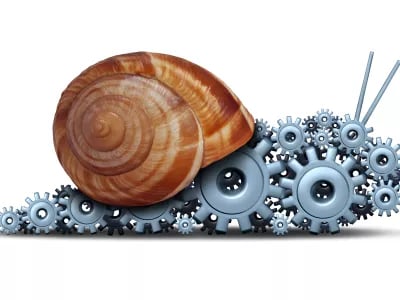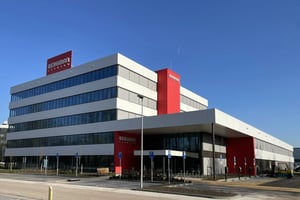In 1975, Intel founder Gordon Moore predicted that the number of transistors in a single microchip would double every two years. That prediction became known as Moore’s Law. This exponential growth reduced the size of all kinds of computer-controlled devices and made it possible to produce them more rapidly and at a lower cost, thus setting the stage for the digital revolution. However, Vaclav Smil, a professor by special appointment who studies the energy transition and who is Bill Gates’ favourite author, has suggested that Moore’s Law is a curse as well as a blessing.
Although experts have their doubts about how well Moore’s Law will hold up over time, the prediction has been shown to be more or less accurate so far. What is less well known is that Moore’s Law has had an unforeseen influence on our expectations of technological progress in all kinds of sectors, not just in microchip technology. In reality, Smil argues, the sustained exponential growth in the number of transistors in a microchip – 46% per year – is an outlier, and it is unfair to compare it with the speed of our vehicles, medical innovations or the transition to renewable energy.
The professor can call on a host of examples from other sectors to support his claim. Edison sold his first commercial light bulbs in 1881; by 2014, with LED bulbs on sale, the number of lumens per watt had only increased by 2.6% per year. Between 1950 and 2010, the energy cost of metal production fell by just 1.7%, and maize production increased by no more than 2% a year. Whereas in 1973 the average car could travel 5.7 km on one litre of petrol, by 2010 that distance was 15.6 km – a per-year rise of only 2.5%. The most striking examples of above-average growth are to be found in the transportation sector: the first-ever intercontinental ships, launched in 1900, achieved a speed of 35 km per hour; in 1958 a Boeing 707 covered the same distance at 885 km per hour, representing progress of 5.6% year on year.
Smil’s goal in citing these figures is not to depress his audience, but to encourage us to adjust our expectations: there is steady growth in innovation in energy, materials and transportation, but that growth is also slow, averaging out at between 1.5% and 3% per year. That being the case, it is no surprise that Smil has serious doubts about some ambitious expectations for the energy transition. He often sees the renewable energy sector using Moore-like scenarios when it comes to achieving a greener economy; unfortunately, solar panels, wind turbines and geothermal installations are not in the same category as microchips. They have more in common with energy, materials and transport – spheres characterised by steady but slow progress. Moore’s Law is only valid for a very limited range of applications. Attempts to impose it on other sectors are more likely to lead to misplaced optimism than to realistic scenarios or plans.
That is something to bear in mind now that the European Union’s member states have committed to generating 70% of all electricity, and 27% of energy as a whole (electricity, gas and heating), from renewable sources by 2030. In view of the current state of the development and application of solar panels and wind energy, Smil sees this commitment as practically impossible to fulfil. The speed at which countries become more sustainable is not going to increase exponentially, and there will have to be some serious investment before those ambitious goals can be achieved.













